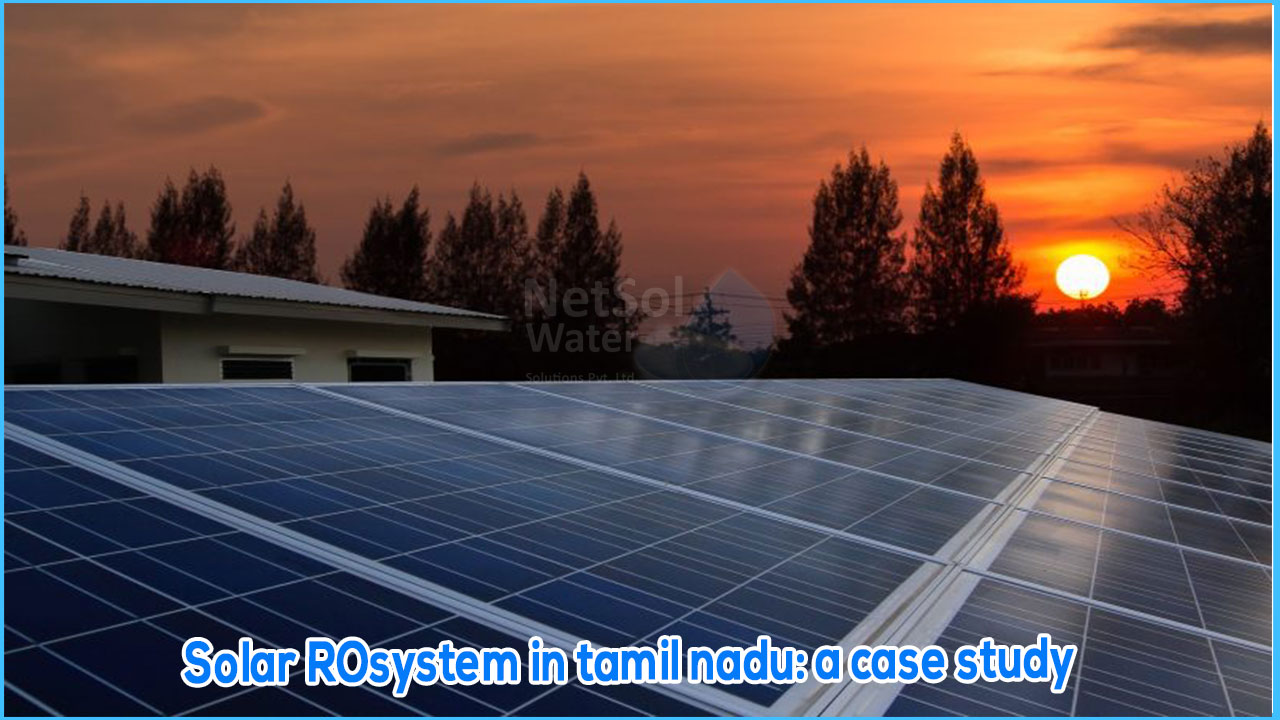OVERVIEW
Solar water filtration is the process of filtering water for drinking and household purposes using solar energy in a variety of methods. Solar energy is becoming more popular for water treatment since it is a low-tech option that captures the sun's heat and energy to make water cleaner and healthier for human consumption and use. Solar water treatment is particularly advantageous in rural locations, where there is a shortage of alternative water purification infrastructure and, more importantly, the electricity required to power such structures. The fact that solar water filtration does not require any fuel is the most tempting feature.
In Tamil Nadu, a 10,000-liter-per-day plant gives hope for providing clean water without the use of fossil fuels. However, because PV panels take up so much room, researchers caution that scaling up the technique will be challenging.
SOLAR PANEL RO SYSTEM IN TAMIL NADU
After a 10,000-liter-per-day solar-powered desalination facility was built at the Vivekananda Memorial in Kanyakumari, Tamil Nadu, India has joined the list of countries using PV to provide drinking water.The plant was created by a team from the Indian Institute of Technology-Madras (IIT-M), and the experimental project was funded by the Ministry of Earth Sciences for Rs. 1.22 crore.
"It requires roughly 15 kV power every day to function," said A. Mani of IIT-mechanical M's engineering department's refrigeration and air-conditioning laboratory.” They placed panels with a total power output of 324 watts each. Because the plant is totally solar-powered, it can only be used during the day, between the hours of 9 a.m. and 4 p.m. The generated electricity is converted to AC via an inverter and stored in 14 batteries for a 30-minute power backup." Solar desalination, according to M.A.Atmanand, head of the National Institute of Ocean Technology, which provided technical assistance for the project, has a lot of potential in coastal locations. Scaling up the method to generate 10 million litres per day or more, according to researchers, could be technically problematic because PV panels take up a lot of area.
IT SLAKES A VILLAGE
Though the facility in Tamil Nadu is being promoted as the country's first, the Rajasthan-based non-profit Barefoot College has been operating a solar-powered desalination plant for the voluntary group Manathan in Kotri village since 2006. Every day, 500 litres of safe drinking water are distributed through this operation. India's freshwater difficulties could be alleviated by solar-powered desalination. Natasha Wright and Amos Winter of MIT proposed employing electrodialysis powered by solar panels to produce enough clean drinking water for a typical Indian village in 2014.
ALTERNATIVE
After weeks of field investigation in India and an assessment of existing technology, the researchers came to their conclusion. The parameters that favored solar-powered electro dialysis, according to Wright and Winter, were relatively low salinity levels — ranging from 500 to 3,000 mg/liter, compared to sea-water levels of roughly 35,000 mg/l — and a lack of electrical power. The team discovered that reverse-osmosis plants could be cost-effective in off-grid regions. Elemental Water Makers, based in The Hague, stated in January that it has invented the world's first solar-powered reverse osmosis desalination technology that runs 24 hours a day.




